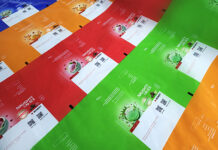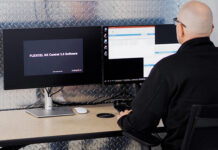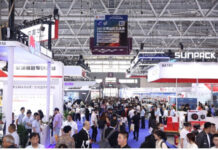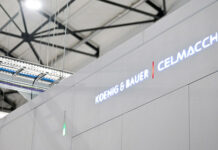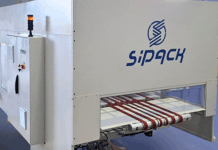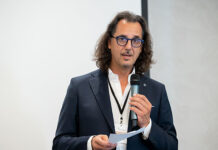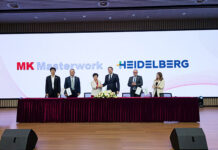Acute labour shortage, high competitive and cost pressure: these issues are particularly explosive in print finishing. Heidelberger Druckmaschinen AG (HEIDELBERG) is countering this with automation and robotic solutions.
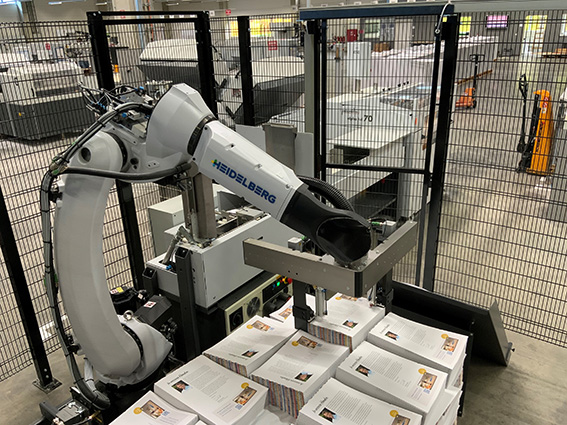
It’s early Monday morning in a print shop: orders are being processed one by one, prepress and the pressroom are already working at full speed. A good start to the week, one would assume, were it not for the two sick notes in the already short-staffed finishing team, for which there is hardly any labour to be found due to the often physically demanding tasks. This makes it difficult to meet the deadlines promised to customers. The production manager is already feeling stressed and cursing under his breath.
This or something similar is how the day begins in many print shops in this country. This is because finishing often still turns out to be a bottleneck due to a lack of automation. Competition and cost pressure are high and increased energy and raw material prices are putting additional pressure on margins.
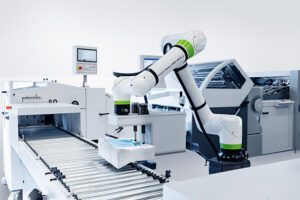
Automation across the entire value chain
HEIDELBERG è consapevole delle sfide che le tipografie devono affrontare e ha sviluppato soluzioni adeguate. “La chiave sta nell’automazione dei processi lungo l’intera catena produttiva”, afferma Stefan Dettke, Responsabile Prodotti e Mercati per il Postpress Commercial di HEIDELBERG. Da un lato, ciò contrasta la mancanza di personale, consentendo alle macchine offset e piegatrici a foglio di produrre in modo altamente autonomo e di essere gestite da un numero minimo di addetti. Dall’altro, il potenziale di prestazioni delle piegatrici può essere sfruttato nel processo di piega, lasciando alla robotica il lavoro fisicamente impegnativo. “Oggi, una piegatrice altamente automatizzata di HEIDELBERG fornisce fino a sette tonnellate di produzione per turno. Questo deve essere gestito da un solo dipendente“, continua Dettke.
HEIDELBERG is aware of these challenges facing print shops and has developed appropriate solutions. “The key lies in the automation of processes across the entire value chain,” says Stefan Dettke, Head of Products and Markets for Postpress Commercial at HEIDELBERG. On the one hand, this counteracts the lack of personnel by enabling sheetfed offset and folding machines to produce autonomously to a high degree and be operated by a minimum number of staff. On the other hand, the performance potential of folding machines can be utilised in postpress by leaving physically demanding work to robotics. “Today, a highly automated folding machine from HEIDELBERG delivers up to seven tonnes of output per shift. That has to be managed by one employee,” continues Dettke.
HEIDELBERG has now transferred the Push to Stop concept from the Speedmaster presses in the pressroom to the Stahlfolder technology in postpress for numerous folding machine models. Several signatures or jobs with identical formats and folding schemes can be processed from the same stack – without interrupting production. Manual intervention in the process is thus avoided. The operator can focus on quality monitoring and the risk of errors due to incorrect operation is minimised.
The Stahlfolder folding machines in the Peak Performance class, i.e. the Stahlfolder TH/KH 82-P, are able to guide the sheets through the folding system in shingled form. “Compared to single sheet processing, this results in a productivity increase of fifty per cent and more,” says Dettke. This high output must be removed at the delivery and placed on pallets. It is physically demanding work, which also has a negative impact on the attractiveness of the workplace.
The StackStar P, formerly known as the Stahlfolder P stacker, from HEIDELBERG provides a remedy. The industrial robot takes on the heavy work and ensures maximum productivity at a constant output. The StackStar P places a package on the pallet every twelve seconds, up to 300 per hour.
The robot’s turning function allows the parcels to be placed with the first side facing down or up. The signatures are always correctly aligned on the pallet for further processing on a saddle stitcher or perfect binder. The StackStar P can be integrated into end-to-end production via the Push-to-Stop concept; the packets are placed on the pallet separately according to signatures.
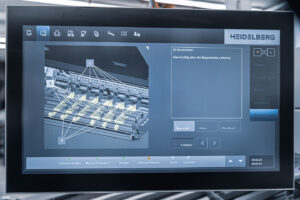
Drupa innovations for postpress focus on staff shortages
HEIDELBERG will be presenting the StackStar C at drupa 2024. It is a collaborative and flexible robot for automatic stacking of product stacks in postpress production.
The StackStar C is mobile. It can be easily moved between different machines. The robot moves at a 180° angle and can place the signatures alternately on two pallets to the left and right of the robot arm. This in turn enables non-stop operation, among other things. The StackStar C works coexistently and ensures safe working between humans and the robot system thanks to an innovative safety concept. A safety fence is therefore not required. Quality control during production is also possible without stopping the robot. Production output can be doubled by using two StackStar C working in tandem.
The different stacking patterns and pallet sizes can be selected intuitively at the operator terminal.
With the new StackStar C, HEIDELBERG thus also offers a robotic solution for the medium output and print run segment that relieves staff of heavy physical labour and effectively addresses the problem of staff shortages in print shops.
The second generation of the highly automated Stahlfolder TH 82-P buckle plate folding machine is also celebrating its premiere at drupa. The Peak Performance folding system will be presented in a new design and with a simplified operating concept.
Thanks to an optimised folding geometry in the first buckle plate folding station and improved sheet transport, the machine is around ten percent more productive than the current technology. The net output is further favoured by the ejection of possible missing sheets after the first folding station. A technical redesign of the second and third folding stations reduces manual intervention during format and paper changes, which also speeds up makeready processes.
The user guidance on the operator terminal of the Stahlfolder TH 82-P is based on the design of the latest Speedmaster XL 106 generation, which will also be making its world premiere at drupa 2024. A “Smartlight” embedded in the operator panel of the folding machine informs the operator about the current status (production, set-up, malfunction) of the folding machine via corresponding colours and guides him to the next points where intervention is required.
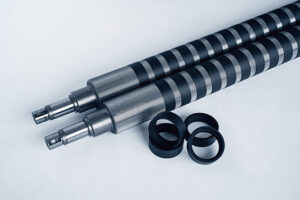
1:1 ratio between offset printing and finishing
Thanks to these highly automated processes, HEIDELBERG has achieved a 1:1 ratio between Speedmaster XL technology and postpress: What a Speedmaster XL 75 or XL 106 delivers, a folding machine can do. While the folding system produces autonomously from the flat sheet to the set-off bundle, the operator monitors production and prepares the subsequent jobs. “As practice shows, one person is enough to operate up to three Peak Performance folding machines equipped with the StackStar P,” says Dettke.
The industrial robot has therefore now established itself on the market. Numerous customers in Asia, Europe and the USA have invested in the technology to date. In addition to the StackStar P, HEIDELBERG is also planning further automation systems for folding machines in the entry-level range.
The aim is to harmonise the workflow throughout the entire production process. Further automation of processes and robotics will allow manual touchpoints to be reduced even further and production to be even more cost-efficient than before – this will also reduce the stress level of production management in print shops.
75 years of Stahlfolder: To mark the anniversary, HEIDELBERG combines the advantages of soft and hard PU in one folding roller with Perfect Grip
Stahlfolder celebrates its 75th anniversary in 2024. Just in time for the anniversary, the company is therefore also demonstrating its innovative strength in folding rollers with Perfect Grip.
Today, printers and finishing companies have to decide whether to equip the folding rollers of their folding machine with rings made of soft PU or hard PU. Both materials have their own specific properties and advantages.
In future, this decision will no longer be necessary. With ‘Perfect Grip’, HEIDELBERG combines the advantages of soft and hard PU in one folding roller and increases the service life at the same time.
From April 2024, Stahlfolder folding machines will be equipped with the new ‘Perfect Grip’ folding roller as standard. Existing folding machines can be retrofitted.






